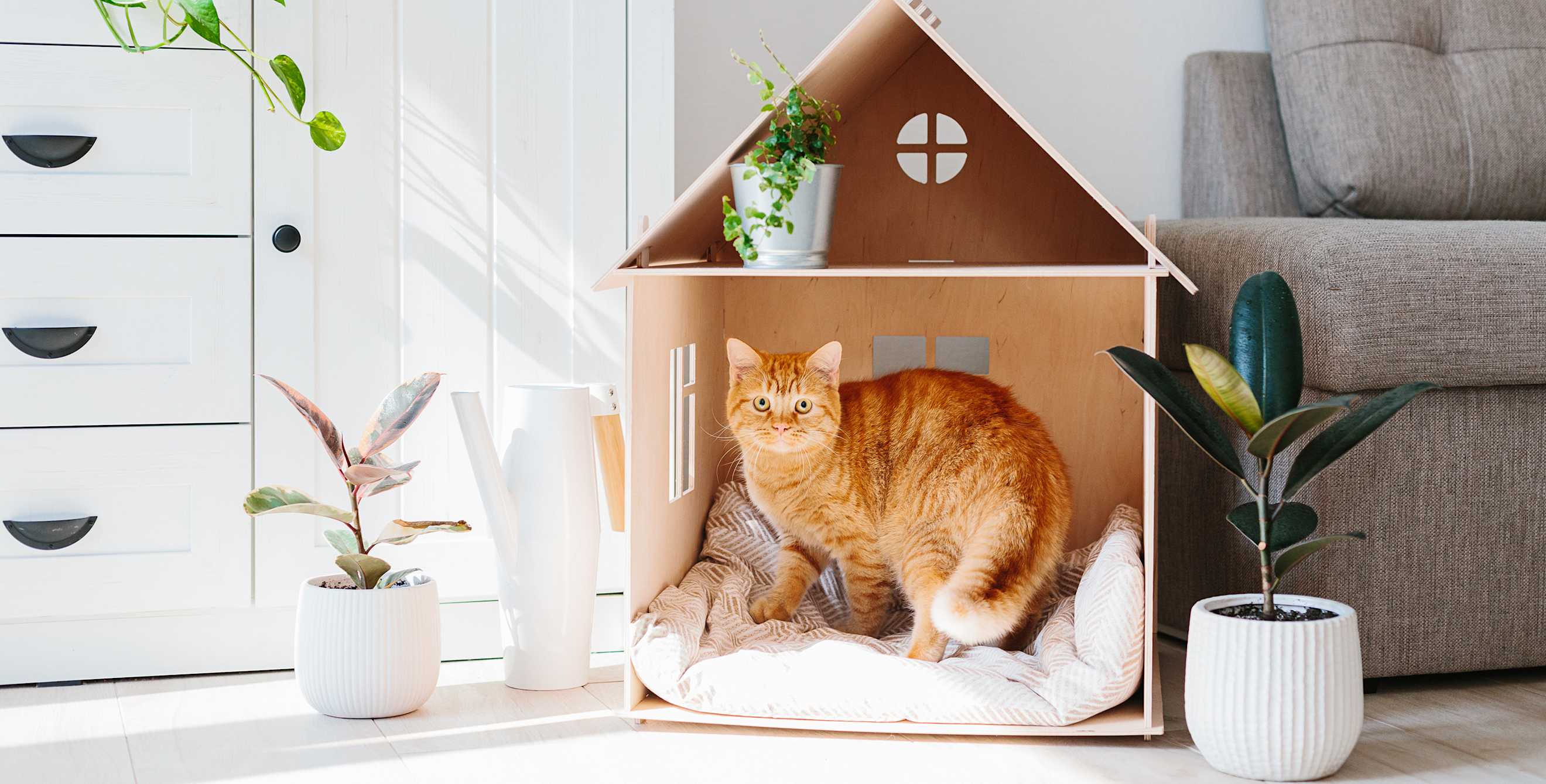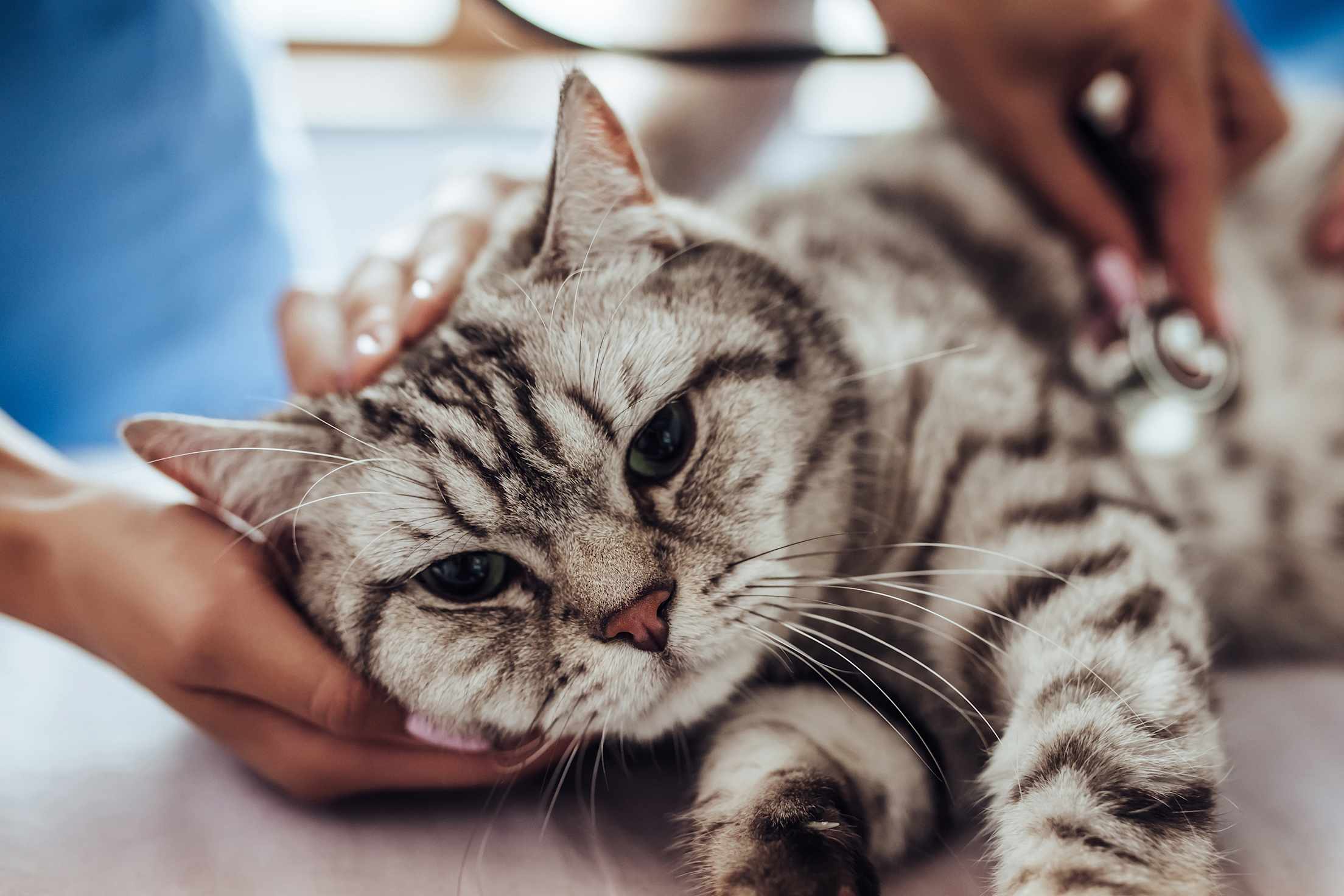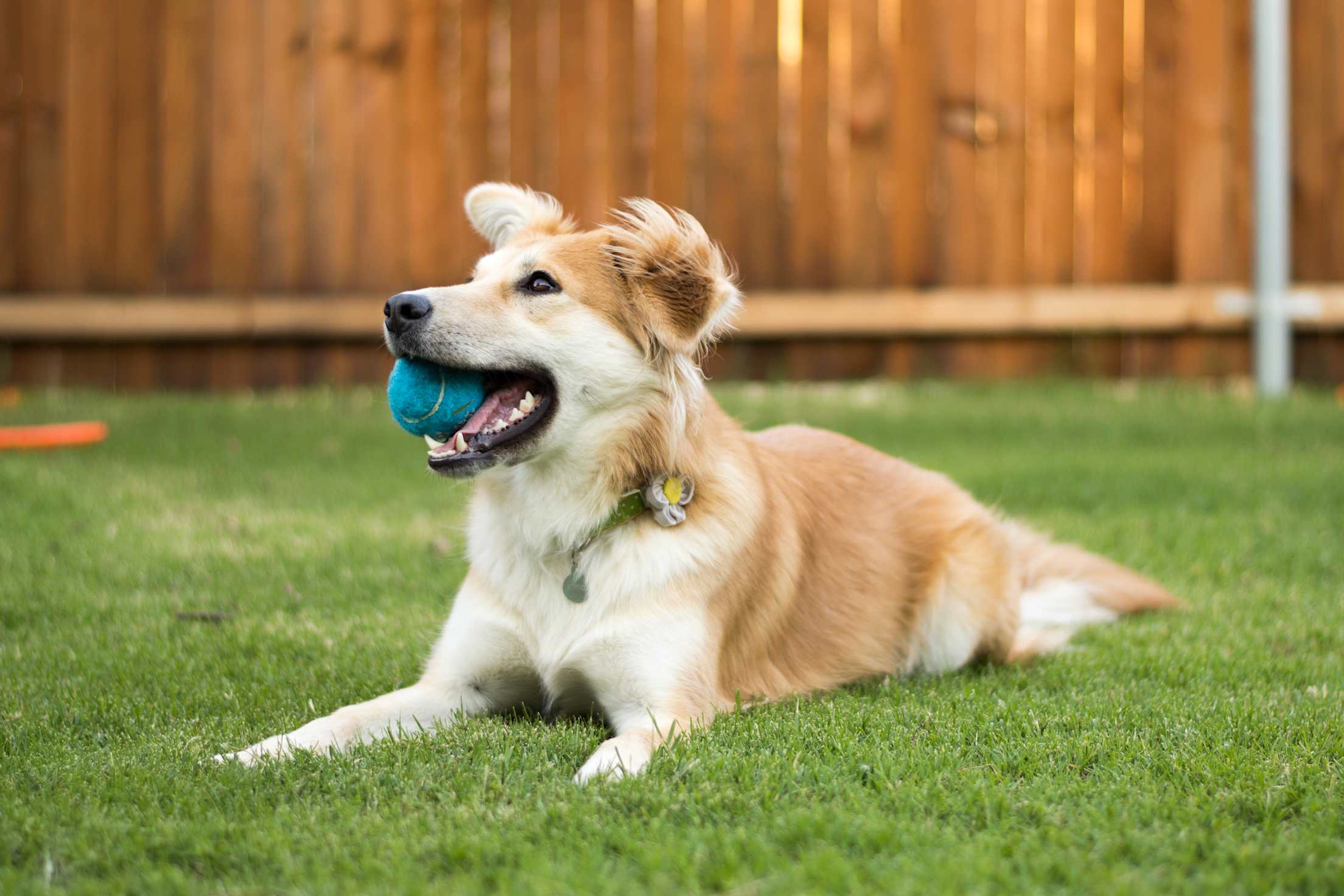
8 Household Items That Are Toxic to Pets
Everyday items like essential oils and grapes can poison your cat or dog.

Many common items found in your home, yard, and garage—such as chocolate, fertilizer, or a bouquet of flowers—can be toxic to cats and dogs. While most pet poisonings occur when Fluffy or Fido inadvertently eat something they shouldn’t, they can also experience health problems when a caustic or toxic product (think: bleach) comes in contact with their skin, says Las Vegas–based veterinarian Shadi J. Ireifej of VetTriage.
You might be surprised by the hazards hiding in your home. Here are eight prevalent items that present a potential danger for pets, and tips for keeping your beloved pal safe around the house.
1. Plants
Does your cat like to nibble on your houseplants? Many plants and flowers can be dangerous for pets, so be cautious about what you bring inside or put in your yard.
For example, lilies are toxic to a cat’s kidneys, says Ireifej. Time is of the essence if your cat consumes any part of a lily; while there may be some signs of gastrointestinal distress, it’s the kidneys that are the biggest concern, he says. Outside plants can also be an issue. Oleander, a floral bush commonly found in California, is toxic to the heart for both cats and dogs, notes Ireifej.
Other plants to keep away from pets include:
- autumn crocus
- azaleas
- daffodils
- dieffenbachia
- hyacinth
- rhododendrons
- sago palms
- tulips
Smart tip: Not sure if a houseplant or flower is safe for your pet? Ireifej recommends looking it up before bringing it into your home. The ASPCA lists more than 1,000 plants that are toxic to pets.
2. Medications
While all pharmaceuticals should be kept away from pets, it’s easy to forget over-the-counter medications that can also be dangerous for pets when consumed, including ibuprofen, Pepto Bismol, and pseudoephedrine. “A lot of our over-the-counter pain relievers can cause significant toxicosis in our dogs,” says veterinarian Elizabeth Yi of Metropolitan Animal Specialty Hospital in Los Angeles. Everyday painkillers such as naproxen (Aleve) or acetaminophen (Tylenol) have the potential to be lethal, according to the Pet Poison Hotline. In 2018, the ASPCA received nearly 40,000 calls about pets that had ingested over-the-counter medications and supplements.
Be cautious with any animal medications you have on hand, too—they often have added flavors that make them more enticing, notes the American Animal Hospital Association. Even if it's a pet-friendly drug, taking too much can be unhealthy or dangerous.
3. Bleach and Other Cleaners
Cleaning agents can be toxic for humans and critters when eaten, breathed in, or inadvertently applied to the skin. “Bleach is effective for cleaning, but caustic if inhaled or ingested,” Ireifej says. And, if your pet steps in bleach, it can lead to inflammation of the paw pads. That's not to say that you can't use bleach: Cleaning your pet’s cage or toys with diluted bleach is safe, so long as you use it in a well ventilated area and thoroughly rinse the items afterward, according to the ASPCA.
Some cleaning supplies will say if they are toxic to pets on the label, Yi says. The San Francisco SPCA recommends cat owners opt for nontoxic cleaning products since cats will ingest products that come in contact with their skin or fur while grooming.
When you're using cleaners, try to keep pets out of the room, keep an eye on open containers, and rinse with water or ensure the floor is fully dry after mopping before letting your pet enter, recommends the Humane Society.
4. Essential Oils
Before you use an essential oil in a fragrance diffuser or a cleaning product, check that it is safe for your pet. Essential oils are potentially toxic for animals, Yi says. Ingesting and inhaling them can lead to serious conditions in cats, including central nervous system depression (a dangerous slowing of neurological functions), liver damage, and aspiration pneumonia.
Tea tree, eucalyptus, lavender, mint, ylang-ylang, and many other essential oils are known to be toxic to pets, according to the College of Veterinary Medicine & Biomedical Sciences at Texas A&M University. Yi recommends reaching out to your veterinarian to discuss using essential oils or homeopathic products before purchasing.

5. Chocolate, Chewing Gum, and Many Other Foods
If you’re a dog owner, you likely know that chocolate is a no-no for your pooch, since it contains theobromine, a compound that causes a bad reaction in canines. While it's also poisonous for cats, they don't seem to seek it out the way dogs do, according to the ASPCA. Eating chocolate can lead to mild to severe symptoms, ranging from gastrointestinal distress to heart arrhythmias. The amount of chocolate your pet eats, as well as the type (dark chocolate is more dangerous), may determine the severity of the symptoms. Since there is potential for serious health problems, your best bet is to make sure that any chocolate is kept safely away from your dog.
Chewing gum, candy, and sugar-free drinks and snacks should also be stashed out of reach, since they may contain xylitol, an artificial sweetener that’s toxic to pets. “Xylitol can cause a severe decrease in blood sugar levels–hyperglycemia—as well as even liver failure in dogs,” says Ireifej.
Other foods that can be toxic to pets include:
- alcoholic beverages
- apple seeds
- coffee
- grapes
- nuts, such as macadamias and walnuts
- onions
- yeasted dough
Follow common-sense practices when it comes to keeping food from pets, says Yi. If your cat is frequently on the kitchen counters, make sure that you don’t keep foods that can cause harm there. If your dog would root through the kitchen garbage if given the opportunity, consider using a gate in the doorway to prevent access to the temptation-filled room or keeping the trash in a cabinet with a childproof lock.
6. Insecticides and Rodent Killers
If it’s poisonous for ants, cockroaches, and rodents, there’s a good chance it’s not safe for your pet. “I highly recommend not having them around the house,” says Yi.
Mice and rat poisons are especially problematic because they are designed to taste good and may harm pets who eat rodents that have been poisoned, says veterinarian Jennifer Coates, who serves on the advisory board for Pango Pets.
“Natural products are a better option,” Yi says. If you must use more toxic insecticides and rodenticides, always read the label carefully before using them.

7. Fertilizers and Weed Killers
“Chemicals meant to fertilize plants or kill insects and weeds can be toxic when eaten, licked from the fur, or even absorbed through the skin,” says Coates. Some fertilizers have bone or blood meal, which can make pets want to eat them, according to the American Animal Hospital Association. Doing so, however, can lead to an intestinal blockage or pancreatitis.
Opt for products that are nontoxic for pets, or store them out of reach and keep pets away from the areas where you’ve used fertilizers or weed killers.
8. Tobacco Products
All items made with tobacco, including nicotine patches, e-cigarette liquid, and cigarettes, should be kept safely out of reach of pets at all times. Ingesting these nicotine-filled items can lead to serious symptoms, including an elevated heart rate, severe vomiting, seizures, and respiratory failure.
How to Keep Pets Safe at Home
Pet-proofing your home can reduce the risk of poisoning or harming furry friends. This process will feel familiar to any parents who’ve made adjustments to keep their home safe for babies and toddlers. "The goal is to keep toxic products in an area that you know your pet can’t get into,” says Yi—that means in high-up cabinets or behind locks.
When you’re purchasing new products or wondering if an item is dangerous to your pet, consider doing some online research first to learn how to use and store it safely or to find a better alternative. Turn to reputable sources, such as the ASPCA, Humane Society, or a veterinarian’s website. Having this knowledge helps with prevention—and, if your pet does consume a product, you’ll have a better sense of how worried you should be, says Ireifej.
What to do if Your Pet Ingests or Inhales a Toxic Item
Prevention is always best, but if something does go wrong, act fast. Time is of the essence, says Ireifej. Avoid treating pets yourself at home—instead, reach out to your veterinarian or a poison hotline. Yi recommends the ASPCA’s Animal Poison Control Center at (888) 426-4435 ($75 consultation fee may apply) or Pet Poison Hotline at (855) 764-7661 ($85 fee per incident). “Both of those are fantastic,” she says, and they will help you understand if your pet has had a benign exposure or if they need to go to a veterinarian or emergency veterinary hospital.
Take your pet’s exposure or ingestion of toxic household items seriously. “It’s better to overreact and seek professional help then underreact and be in serious danger,” Ireifej says.
Give your pet access to the care he or she needs with pet insurance from AAA.